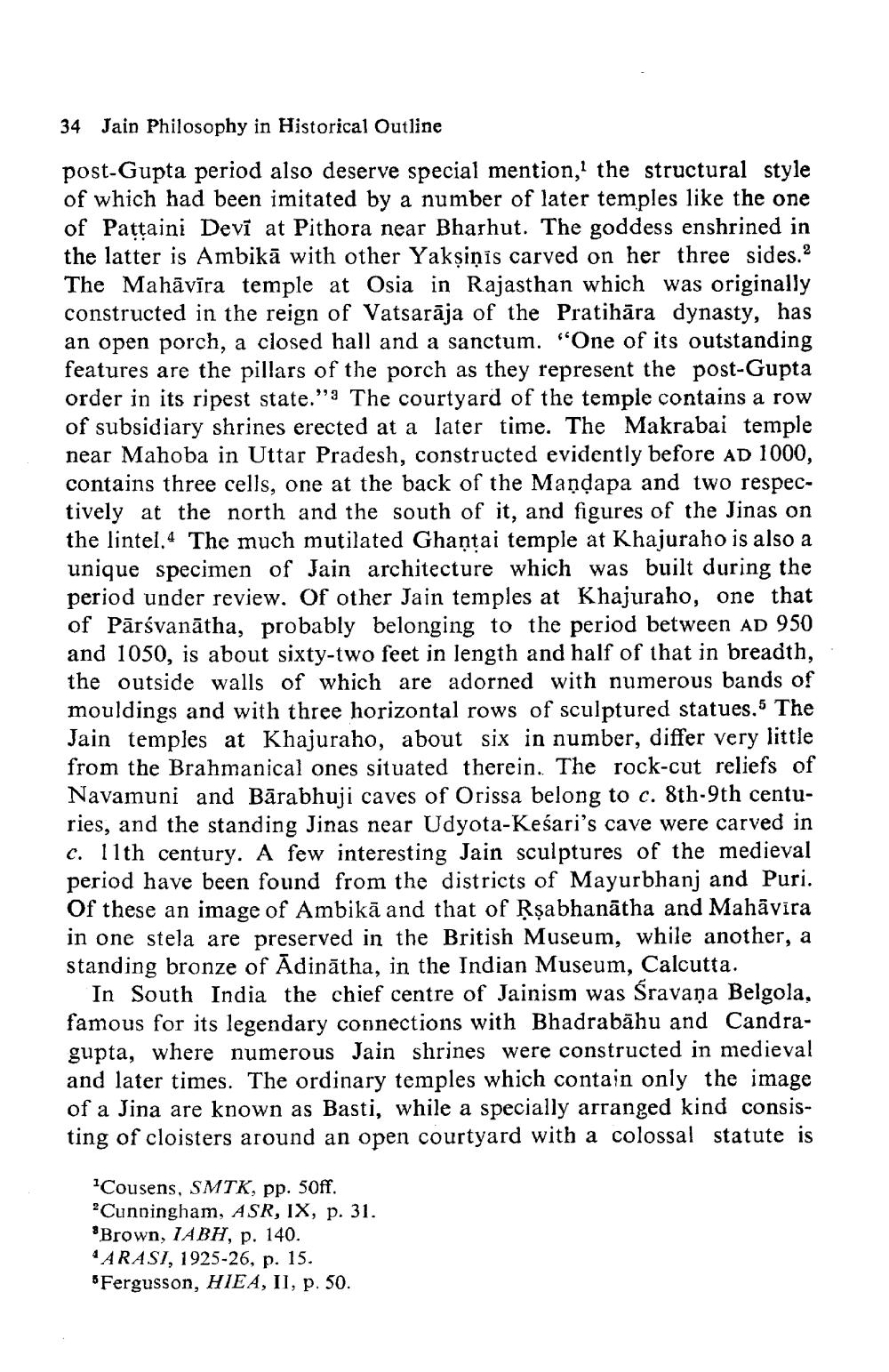________________
34 Jain Philosophy in Historical Outline
post-Gupta period also deserve special mention, the structural style of which had been imitated by a number of later temples like the one of Pattaini Devī at Pithora near Bharhut. The goddess enshrined in the latter is Ambikā with other Yakṣiṇis carved on her three sides.? The Mahāvīra temple at Osia in Rajasthan which was originally constructed in the reign of Vatsarāja of the Pratihāra dynasty, has an open porch, a closed hall and a sanctum. “One of its outstanding features are the pillars of the porch as they represent the post-Gupta order in its ripest state.". The courtyard of the temple contains a row of subsidiary shrines erected at a later time. The Makrabai temple near Mahoba in Uttar Pradesh, constructed evidently before AD 1000, contains three cells, one at the back of the Mandapa and two respectively at the north and the south of it, and figures of the Jinas on the lintel.4 The much mutilated Ghantai temple at Khajuraho is also a unique specimen of Jain architecture which was built during the period under review. Of other Jain temples at Khajuraho, one that of Pārsvanātha, probably belonging to the period between ad 950 and 1050, is about sixty-two feet in length and half of that in breadth,
tside walls of which are adorned with numerous bands of mouldings and with three horizontal rows of sculptured statues. 5 The Jain temples at Khajuraho, about six in number, differ very little from the Brahmanical ones situated therein. The rock-cut reliefs of Navamuni and Bārabhuji caves of Orissa belong to c. 8th-9th centuries, and the standing Jinas near Udyota-Kesari's cave were carved in c. 11th century. A few interesting Jain sculptures of the medieval period have been found from the districts of Mayurbhanj and Puri. Of these an image of Ambikā and that of Rşabhanātha and Mahävira in one stela are preserved in the British Museum, while another, a standing bronze of Ādinātha, in the Indian Museum, Calcutta.
In South India the chief centre of Jainism was Sravana Belgola, famous for its legendary connections with Bhadrabāhu and Candragupta, where numerous Jain shrines were constructed in medieval and later times. The ordinary temples which contain only the image of a Jina are known as Basti, while a specially arranged kind consisting of cloisters around an open courtyard with a colossal statute is
*Cousens, SMTK, pp. 50ff. Cunningham, ASR, IX, p. 31. $Brown, IABH, p. 140. "ARASI, 1925-26, p. 15. 5Fergusson, HIEA, II, p. 50.




